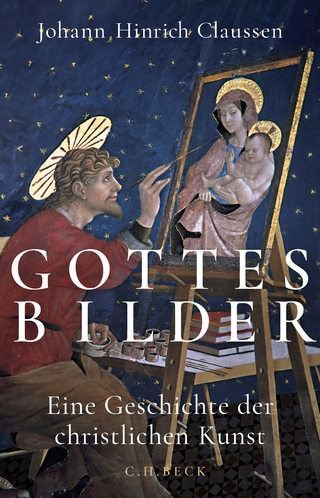
The Abrahamic Vernacular
Seiten
2024
Cambridge University Press (Verlag)
978-1-009-28675-6 (ISBN)
Cambridge University Press (Verlag)
978-1-009-28675-6 (ISBN)
The exclusive nature of Abrahamic monotheisms is seen through religious wars, polemics, and social exclusion. However, despite communal rivalry, Jews, Christians, and Muslim practitioners keep turning to each other to enrich ritual practices. This Element proposes that there are deeper forms of entanglement at work in these historical moments.
Contemporary thought typically places a strong emphasis on the exclusive and competitive nature of Abrahamic monotheisms. This instinct is certainly borne out by the histories of religious wars, theological polemic, and social exclusion involving Jews, Christians, and Muslims. But there is also another side to the Abrahamic coin. Even in the midst of communal rivalry, Jews, Christians, and Muslim practitioners have frequently turned to each other to think through religious concepts, elucidate sacred history, and enrich their ritual practices. Scholarship often describes these interactions between the Abrahamic monotheisms using metaphors of exchange between individuals-as if one tradition might borrow a theological idea from another in the same way that a neighbor might borrow a recipe. This Element proposes that there are deeper forms of entanglement at work in these historical moments.
Contemporary thought typically places a strong emphasis on the exclusive and competitive nature of Abrahamic monotheisms. This instinct is certainly borne out by the histories of religious wars, theological polemic, and social exclusion involving Jews, Christians, and Muslims. But there is also another side to the Abrahamic coin. Even in the midst of communal rivalry, Jews, Christians, and Muslim practitioners have frequently turned to each other to think through religious concepts, elucidate sacred history, and enrich their ritual practices. Scholarship often describes these interactions between the Abrahamic monotheisms using metaphors of exchange between individuals-as if one tradition might borrow a theological idea from another in the same way that a neighbor might borrow a recipe. This Element proposes that there are deeper forms of entanglement at work in these historical moments.
1. How this element works; 2. What is an Abrahamic monotheism?; 3. Centrifugal and centripetal models of collective monotheism; 4. The Abrahamic vernacular; 5. Models of religious common sense; 6. Concluding thoughts: moving from an affective history to a history of common sense; 7. References.
| Erscheinungsdatum | 13.04.2024 |
|---|---|
| Reihe/Serie | Elements in Religion and Monotheism |
| Zusatzinfo | Worked examples or Exercises |
| Verlagsort | Cambridge |
| Sprache | englisch |
| Maße | 152 x 229 mm |
| Gewicht | 124 g |
| Themenwelt | Religion / Theologie ► Christentum ► Kirchengeschichte |
| Geisteswissenschaften ► Religion / Theologie ► Judentum | |
| ISBN-10 | 1-009-28675-7 / 1009286757 |
| ISBN-13 | 978-1-009-28675-6 / 9781009286756 |
| Zustand | Neuware |
| Informationen gemäß Produktsicherheitsverordnung (GPSR) | |
| Haben Sie eine Frage zum Produkt? |
Mehr entdecken
aus dem Bereich
aus dem Bereich
von Athanasius bis Gregor dem Großen
Buch | Softcover (2024)
C.H.Beck (Verlag)
CHF 18,90
eine Geschichte der christlichen Kunst
Buch | Hardcover (2024)
C.H.Beck (Verlag)
CHF 44,75


